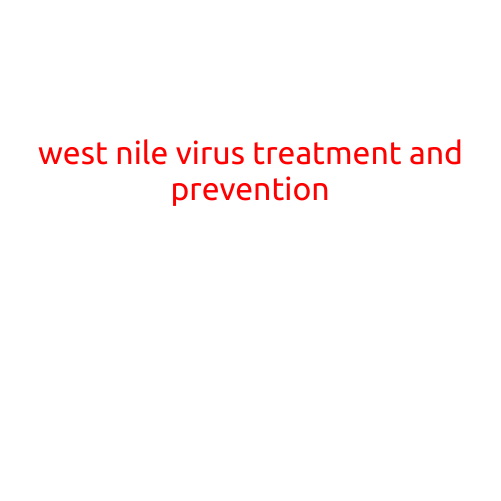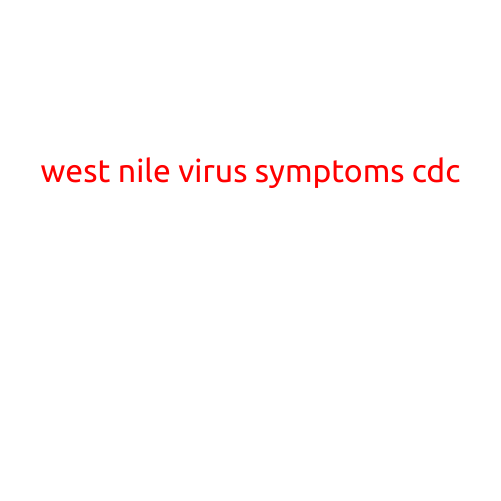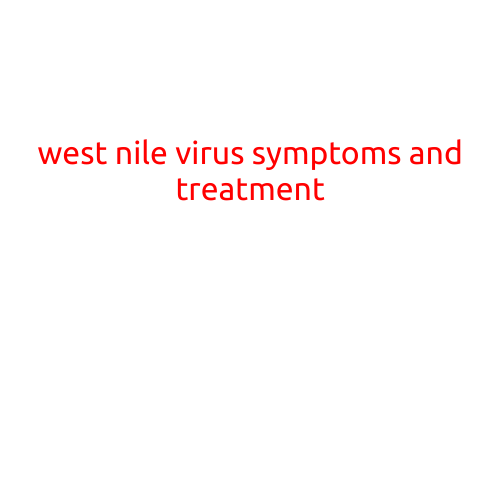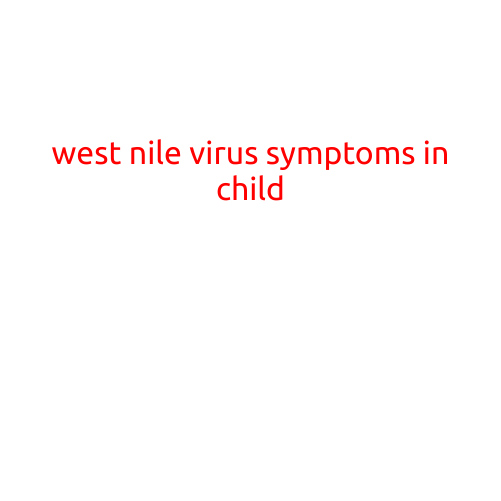
West Nile Virus Animal Symptoms: What You Need to Know
West Nile virus (WNV) is a potentially deadly viral disease that affects not only humans, but also animals. While it is most commonly associated with birds, horses, and other small mammals can also contract the virus. Understanding the symptoms of WNV in animals is crucial for prompt diagnosis and treatment, which can help reduce the risk of transmission to humans and other animals.
Commonly Affected Animals
West Nile virus can affect a wide range of animals, including:
- Horses
- Dogs
- Cats
- Small mammals, such as raccoons, opossums, and squirrels
- Birds, including domestic and wild species
Animal Symptoms of West Nile Virus
The symptoms of WNV in animals can vary depending on the species and severity of the infection. Here are some common signs of WNV in animals:
- Horses:
- Loss of appetite
- Fever
- Lethargy
- Depression
- Neurological signs, such as stumbling, tremors, or seizures
- In severe cases, horses may exhibit paralysis, blindness, or death
- Dogs:
- Fever
- Lethargy
- Weakness in the legs
- Headache
- Seizures
- In severe cases, dogs may exhibit paralysis, confusion, or loss of coordination
- Cats:
- Fever
- Lethargy
- Loss of appetite
- Vomiting
- Diarrhea
- In severe cases, cats may exhibit neurological signs, such as seizures or paralysis
- Small Mammals:
- Fever
- Lethargy
- Weakness
- Seizures
- In severe cases, small mammals may exhibit paralysis, confusion, or loss of coordination
- Birds:
- Weakness or paralysis of the wing or legs
- Lethargy
- Fever
- Head tilt or drooping
- In severe cases, birds may exhibit seizures, tremors, or death
How Animals Contract West Nile Virus
West Nile virus is primarily transmitted to animals through the bite of an infected mosquito. Mosquitoes that feed on infected birds can then transmit the virus to animals when they bite them. The virus can also be transmitted through other means, such as contact with infected animal secretions or tissues.
Diagnosis and Treatment
Diagnosing WNV in animals can be challenging, as the symptoms can be similar to those of other diseases. Veterinarians typically diagnose WNV based on a combination of physical examination, laboratory tests, and medical history. Treatment options for WNV in animals are limited, and the primary goal of treatment is to manage symptoms and prevent complications.
Prevention
Preventing the spread of WNV in animals is crucial for reducing the risk of transmission to humans and other animals. Here are some steps you can take:
- Eliminate breeding sites: Eliminate standing water around your home, as it can attract mosquitoes.
- Use insect repellent: Use insect repellent on your pets, especially during peak mosquito hours.
- Avoid peak mosquito hours: Avoid outdoor activities during peak mosquito hours (dawn and dusk).
- Get your pets vaccinated: Consider getting your pets vaccinated against WNV, especially if you live in an area where the virus is common.
Conclusion
West Nile virus is a serious and potentially deadly disease that can affect a wide range of animals. Understanding the symptoms of WNV in animals is crucial for prompt diagnosis and treatment, which can help reduce the risk of transmission to humans and other animals. By taking prevention measures and seeking medical attention if you suspect your pet has contracted WNV, you can help protect your animal and your family from this potentially deadly virus.





